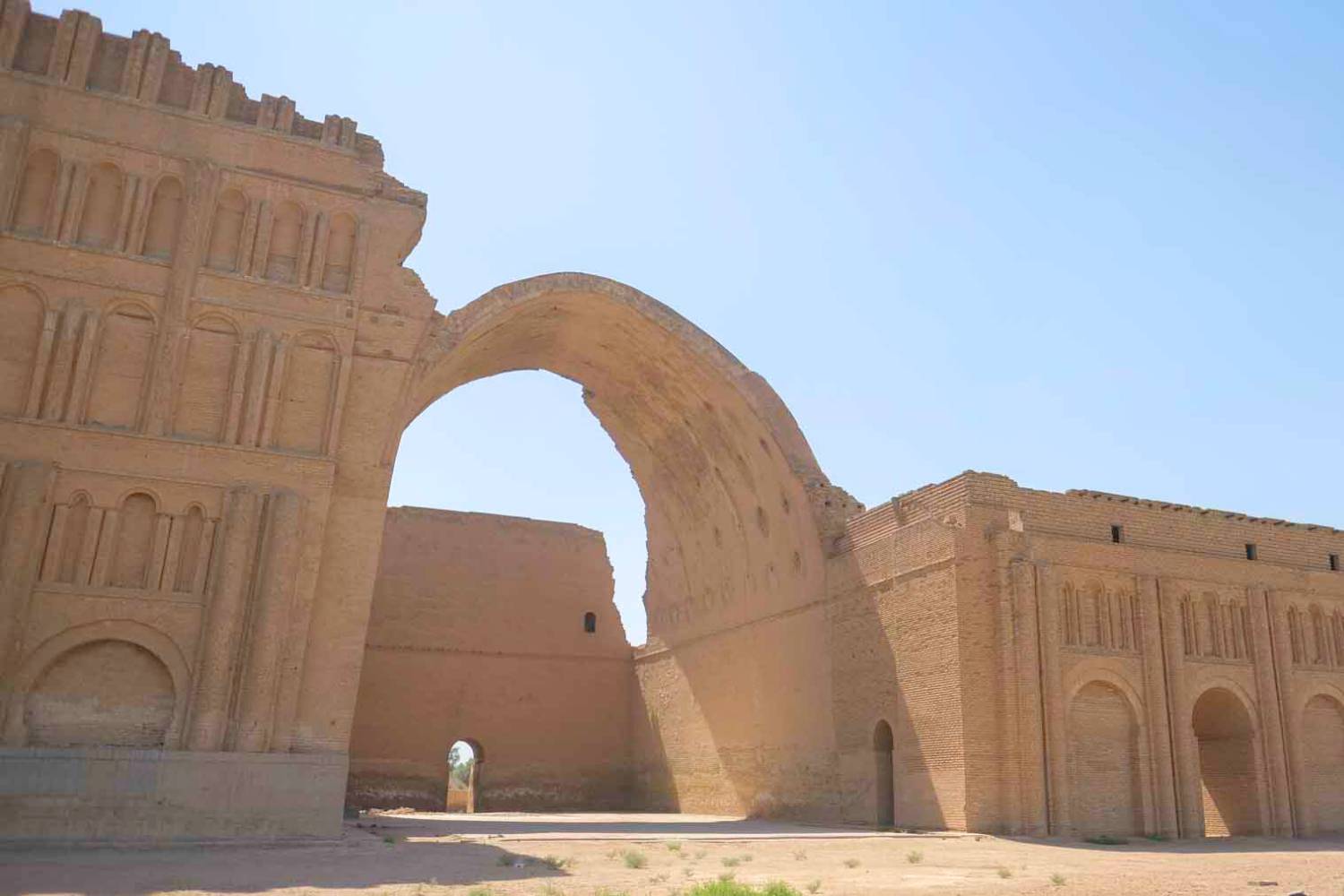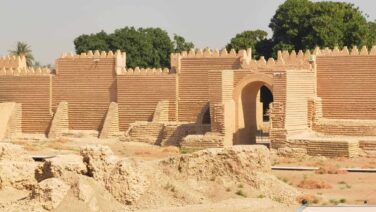Ctesiphon, an ancient city located on the eastern bank of the Tigris River in modern-day Iraq, served as a capital for both the Parthian and Sassanian Empires. Renowned for its grand architecture and strategic significance, Ctesiphon was a major cultural, political, and economic hub in ancient Mesopotamia. The city’s most iconic structure, the Taq Kasra, remains a testament to its historical grandeur and architectural innovation.
Highlights
- Taq Kasra: The largest single-span brick arch in the world.
- Ctesiphon Palace: The royal residence of Sassanian kings, known for its grandeur.
- Great Arch of Ctesiphon: A symbol of Persian architectural achievement.
- Strategic Location: Situated on the Tigris River, providing control over trade routes and military advantage.
Historical Timeline
- circa 120 BC: Ctesiphon is founded by the Parthians as a military and administrative center.
- 58 BC: The Romans capture Ctesiphon for the first time under General Pompey.
- circa 224 AD: The Sassanian Empire rises, making Ctesiphon its capital.
- 263 AD: The city is briefly captured by the Romans during the reign of Emperor Valerian.
- 363 AD: Roman Emperor Julian’s failed campaign results in the city remaining under Sassanian control.
- 637 AD: Ctesiphon falls to the Muslim Arab forces during the Islamic conquest.
- 8th Century AD: The city starts to decline as the Abbasid Caliphate establishes Baghdad as its capital.
- circa 1258 AD: The Mongol invasion leads to further decline.
- 19th Century AD: Archaeological interest in Ctesiphon grows, leading to various excavations.
- 20th Century AD: Preservation efforts begin, focusing on the Taq Kasra.
Inhabitants and Rulers
Ctesiphon was home to a diverse population, including Parthians, Sassanians, Arabs, and Romans at different points in its history. Prominent rulers included:
- Shapur I: One of the early and influential kings of the Sassanian Empire.
- Khosrow I: Known for his significant architectural contributions, including the construction of the Taq Kasra.
- Nabonidus: The last king of the Neo-Babylonian Empire, who undertook restoration projects in Eridu.
Architectural and Cultural Sights
1. Taq Kasra
Why Important: The Taq Kasra, or the Arch of Ctesiphon, is the largest single-span brick arch in the world. It symbolizes the architectural prowess of the Sassanian Empire and remains an iconic landmark of ancient Persian engineering.
2. Ctesiphon Palace
Why Important: This grand palace served as the royal residence for Sassanian kings. Its elaborate design and extensive halls reflect the opulence and sophistication of Sassanian architecture.
3. Great Arch of Ctesiphon
Why Important: The Great Arch is part of the palace complex and stands as a testament to the engineering skills of ancient Persians. It was used for state functions and ceremonial purposes.
4. Sassanian Ruins
Why Important: The ruins of various buildings and structures around Ctesiphon provide insight into the urban planning and architectural style of the Sassanian period.
5. Parthian Relics
Why Important: Relics from the Parthian period, including coins, pottery, and inscriptions, offer a glimpse into the early history and culture of Ctesiphon.
Geographic Importance
Ctesiphon’s strategic location on the Tigris River made it a vital center for trade and military operations. The river provided a natural defense and facilitated trade routes that connected the Persian Gulf with the Mediterranean and beyond. This positioning allowed Ctesiphon to flourish as a commercial and political hub, influencing the broader region of Mesopotamia.
Conclusion
Ctesiphon, with its rich history, grand architecture, and strategic significance, remains a key site in the study of ancient Near Eastern civilizations. From the impressive Taq Kasra to the remnants of its royal palaces, the city offers a profound glimpse into the past achievements of the Parthian and Sassanian empires. Exploring Ctesiphon provides a deeper understanding of the region’s historical and cultural legacy. Whether you are a history enthusiast or a curious traveler, the legacy of Ctesiphon continues to inspire awe and admiration.


